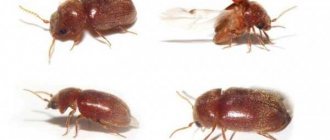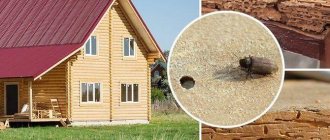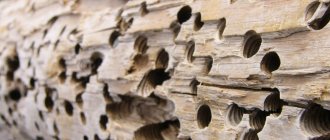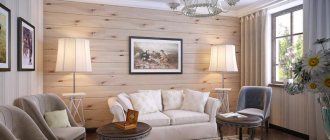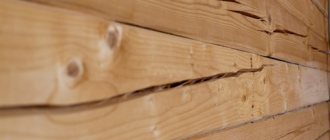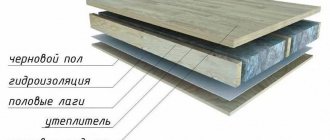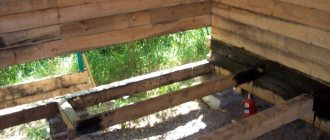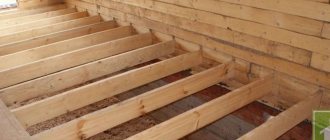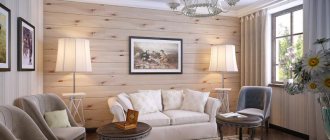This is the case when big troubles start small. The wood-boring beetle is small, but it can cause considerable problems, and a large population can cause big problems. Furniture and floor coverings, window frames, doors - everything where a miniature insect can penetrate, gnawing labyrinths of passages in wood, is at risk. What you need to know about an insidious pest, what to do when detected - signs of appearance in the house, effective means and methods of destruction, antiseptics, impregnations, insecticides.
Description of the insect
Four types of beetles live in heated rooms: furniture beetles, house beetles, grain beetles, barbel beetles, and, less commonly, bark beetles.
Characteristic features of grinder beetles:
- an elongated body (from 3 to 10 mm) of a cylindrical shape with a relatively small head; hard wings, covered with a hard chitinous shell with hairs; three pairs of five-segmented legs; antennae of different lengths; color in brownish tones with reddish, greenish-yellow shades.
Adult beetles crawl out of their nests only during the breeding season.
The main function of an adult beetle is mating and laying eggs by females. They do not live long, from one to three weeks. One female lays from 40 to 200 eggs per clutch, depending on the species. The main damage to wood is caused by larvae. From the first minute of their appearance, they begin to actively eat the tree. It takes from one to three years before pupation. During the day, the larva makes passages up to 3 mm in the tree.
Nutrition
The larvae of beetles mainly feed on cellulose in wood and paper. One of the types, bread, is found in food products: dry bread, cereals, dried fruits, pasta. Some species prefer dry wood, others wet. The population of wood grinder beetles causes significant damage to structures and wood products, literally eating it away from the inside, turning it into dust.
Life cycle and reproduction
The danger of grinder beetles is that they have a long biological life cycle, up to three years. The adult individual (imago) of the beetle grinder can be seen only in the warm season in May-June, when it gets out of the nest and mates. Caterpillars inside wood can live from three years to 15–17 years. Periodically, if the temperature fluctuates downwards, it goes into suspended animation.
Cycle:
- Eggs. The female beetle grinder lays eggs in cracks, crevices, and in nests that the female makes. They are whitish or transparent in appearance, 1–1.5 mm long. The clutch of eggs contains symbiotic microorganisms, they help the larvae digest cellulose. Larvae. They begin to appear at about 7–12 days. The shape resembles a semi-rolled white worm (3–4 mm). Most have several pairs of short, prehensile legs that help them move along the aisles. Pupa of a beetle grinder. An adult individual is formed from it in 2–3 years. Before transformation, the larva stops eating for several days. The pupa has enough accumulated nutrients.
The optimal temperature for reproduction is +28 – +30°C. If a similar temperature regime is maintained in the house, then certain types of grinder beetles can crawl out and reproduce all year round.
This is interesting. Getting rid of woodworm is difficult. All individuals of the biological chain spend most of their time inside the structures of a log house or hut.
Borer beetles can also be detected by the characteristic sound inside a wooden structure. Before mating, the male lightly hits his head against the walls of the passage. This is a conditioned signal for the female, reminiscent of the ticking of a clock mechanism.
Chemical pesticides
If you have kerosene or gasoline at home, you can also use these substances to control woodworms. Apply the product to the wood; this protective layer will not allow woodworms to penetrate inside. An alternative method for controlling woodworms is to mix several substances together to create a powerful treatment potion. For example, mix yellow furniture wax with turpentine and pepper. Then spread this mixture over the infested area and holes in the wood.
- Benefit : You reduce the chance of insects getting into the wood
- Disadvantage : this mixture does not penetrate deep into the wood, so the beetles will not be killed
Varieties of wood-boring beetles and harmfulness
The species of grinder beetles, while fundamentally similar, differ in their preferences in food, its types, and living conditions. They also have characteristic external signs.
Longhorn beetle
Their favorite habitat is the trunks of fallen trees, mostly coniferous. Distinctive features of the imago: body length up to 3.5 cm, long whiskers up to 7 cm. Black color with a greenish tint, with whitish down on the tips of the wings. The female lays only one to three eggs, but the larva lives, develops, and sharpens wood for 3 years.
Grinder beetle
Borer beetles are shy insects. At the first sign of danger, it freezes and imitates a dead insect. For this property they are called “pretenders”. The chitinous hood and elytra are brown-red in color, body length is up to 5 mm. Borer beetles mate in late spring and early summer and can fly far from the nest.
One female makes several clutches, the number of eggs is 100–130. The larvae are 2–3 mm, voracious, destroy the tree from the inside, and make long passages in it. They sharpen wooden furniture, books, structures, and dry food. A colony of borers can cause significant damage.
Bark beetle
The name of the beetle indicates that it settles under the bark of a tree. Body length up to 5–8 mm, head elongated, almost merging with the body. Females make several clutches of 70–80 eggs per year.
If a hut or bathhouse is built of logs and there is a bark beetle infested there, then a year is enough for the structure to become unusable. When the first signs of the appearance of borer beetles are detected, it is necessary to urgently take measures to combat it. The bark must be removed from wood before it can be used as a building material.
Furniture sharpener
Chashel are small brownish bugs, 3–9 mm. The female lays up to three hundred eggs. As soon as the larva is born, it makes a small hole and goes deep into the thickness of the wood. It does not drill through holes, so at first you may not notice the appearance of grinder beetles.
The voracious caterpillars live in favorable conditions for years before turning into chrysalises. The tunnels that the shawl gnaws are filled with wood dust. They destroy any wooden structure, from wooden beams to furniture. There are two types: house and furniture.
Bread grinder
Small grinder beetles, with a body length of up to 4 mm, brownish in color. Found in all dry foods, herbs, tea, tobacco. They eat food and bugs. They are fertile, the female lays 120–140 eggs. Larvae (4–5 mm) can live for several days, and in favorable conditions for several years. The cocoon for the pupa is made from small particles of products. Small bugs fly out during the mating period; you can see them on the kitchen windowsill. If small holes appear on grocery bags, they should be thrown away along with the person possessed.
Beetle grinder in the house - why it is dangerous
Carpenter beetles not only live in wooden structures, but also eat them. The ideal home for insects is wooden log houses. Lumber stored in stacks, especially logs and beams, are also attractive to them. Furniture can be eaten away by larvae to such an extent that at the slightest contact it crumbles into dust, the same applies to beams and ceilings.
The beetles are shy and are active mainly at night. It is not easy to see them, let alone catch them; when danger arises, the grinder pretends to be dead, so it is easy to mistake it for ordinary rubbish, and not at all for a living creature.
Causes and signs of pest appearance
The main reason for its appearance is the use of low-quality wood that has not been treated with impregnations against borer beetles. Over time, the protective layer loses its properties. During the mating period, beetles fly to other wooden structures and make new clutches. It is necessary to periodically inspect surfaces and protect wood from woodworms. Impregnate periodically with a new layer of insecticides.
Signs of the appearance of grinder beetles:
- small holes on the surface of wooden structures, furniture; the appearance of wooden pollen, similar in color to mustard powder; rustling, tapping inside the solid wood in the evening, at night; a characteristic odor from insect secretions, insect pheromones; if you remove the outer layer, you can see grooves , larval passages.
You need to start exterminating beetles immediately, as soon as the first signs appear.
Tap the wood, the sound is different. In a healthy tree it is dull, in a damaged tree it is louder, due to the presence of voids. Pollen will begin to fall out of small tree holes.
Folk methods of struggle
Fighting on your own is very difficult and time-consuming work. If woodworms are in oversized wooden objects, you can do the following:
- place the object in the freezer for two weeks
- heat the item to 70 degrees in the oven
Insects cannot tolerate high and low temperatures; with this method of control, they die. However, the use of freezing or heating methods for objects infested with woodworms is not always acceptable, since objects that are too large cannot be moved.
There are various pesticides and woodworm control methods, both biological and chemical.
How to destroy parasites with your own hands?
Only comprehensive measures to combat wood borers will help protect wood from destruction by wood borers.
Folk recipes
Apply when the first signs of damage by grinder beetles appear, with a limited affected area.
Methods of pest control:
- Impregnation of a wooden surface with a concentrated solution of salt. Mixtures with kerosene. Add 3 portions of turpentine to kerosene (distillation of resin secretions from coniferous trees), mix thoroughly. Lubricate the surface in areas with signs of damage. The procedure is repeated several times. Use protective equipment. The mixture is flammable, with a characteristic odor. The second method is to add kerosene to linseed motor oil (the proportion is 3 parts oil, one part kerosene), saturate a wooden surface with the mixture. Vaseline and wax. Vaseline oil is poured into the holes in the wood using a syringe, and they are sealed with wax. Disinfectant, black carbolic acid, naphthalene, and molten resin are taken in equal proportions, mixed, and applied to wooden structures. The method is more suitable for processing construction beams and boards.
Treatment with folk remedies is repeated periodically. If these methods do not give a positive result, they move on to radical methods of combating borer beetles.
Insecticides
Before you fight wood-boring beetles with insecticides, you need to protect your hands, respiratory tract, and eyes.
Conventional products, such as Dichlorvos, are ineffective in combating beetles; the aerosol ends up on the surface. Penetrates into wood in limited quantities.
Preparations:
- "Anti-bug." A complex action product that destroys not only grinder beetles, but also mold and mildew. Does not change the color of wood, therefore it is suitable for processing structural elements of furniture and lumber. Apply to the surface 2 times, with breaks until completely dry. Advantages: affordable price, low toxicity. If wood holes are found on the surface, pour the drug into them with a syringe.
- "Empire 20". A broad-spectrum insecticide in the form of microcapsules, which extends the period of influence on parasites to six months. Low toxicity, leaves no traces. Destroys primarily adult individuals, interrupting the reproduction cycle. The best time for processing is May-June, the mating period of grinder beetles. Spray and wet the contaminated surface.
- "Treetox." A drug for year-round use. Prolonged exposure (up to six months). The tree is treated 3 times, with an interval of 21 days. Lubricate wooden surfaces, insert a syringe into the holes made by the beetles, and seal them with wax.
- "Lingofix I-pro." A new generation of means to combat borers affects the reproduction of insects and affects their growth. Can be processed at any time of the year. It is recommended to disinfect wooden exterior parts after 10 years. One portion of Lingofix I-Pro is diluted in three parts of water before use. After processing and complete drying of the preparation, the surface can be opened with stain, varnish, or paint. In conditions of severe damage to wood, it is injected into holes on the surface. Or drill diagonal holes with a thin drill and pour the diluted drug into it.
- "Belinka belocid." A combined product made from a mixture of alkyd resins and biocides. It is toxic, so spraying is not recommended. Does not change the color of wooden coverings. Used as a prophylactic to protect against the borer beetle. In order to sanitize the affected areas, treat the surface several times and inject it into the wood holes with a syringe. Allow the wood to dry for a week, then repeat the treatment.
Application of dry steam
In a bathhouse or sauna, dry steam is obtained by heating the heater stove to 600–700°C. If you pour water on a hot stove, dry steam is formed. Heating a room with dry steam to a temperature of 85–90°C leads to the death of pests.
Fumigation
Method of fumigating a room with PH3 (hydrogen phosphide). For these purposes, special equipment is required, so it is right to entrust the processing to professionals. The gas is toxic, protective equipment is required. Fumigation is a highly effective remedy that penetrates into all cracks and holes, destroying the entire population of grinder beetles. Treatment lasts 24 hours, ventilation – 2 days.
The second method is fumigation using sulfur bombs (“Pawn-B”). It is better to poison the beetle grinder during the breeding season in May–June.
Microwave
A professional way to exterminate bark beetles. Using a microwave generator, the damaged surface is treated. At temperatures above 60°C, the entire population of grinder beetles dies. The advantage is targeted impact, high efficiency.
Douching
The douching method is based on the introduction of insecticides into the holes made by grinder beetles. In case of deep damage, additional holes are made with a thin drill. After processing, they are sealed with wax.
Heat treatment
The best remedy for woodworms in a wooden house is to freeze it to at least –3°C. The beetle and larvae die at sub-zero temperatures. A good way to control pests in a bathhouse.
Heat the structural elements with a construction hairdryer to a temperature of +45°С ... – 50°С. The larvae and eggs of the borer beetle die.
Biological features of bark beetles
There are quite a few species of beetles that choose wood as a habitat; the general name of these pests is Scolytidae. A small bug, up to 1 cm in size, is prolific and active from early spring until the onset of frost. It is at this time that you need to worry about how to deal with bark beetles in a wooden house. Beetles feed on tree sap, leaving behind processed and undigested sawdust or dust.
The structure of the insect's body is adapted to penetrate the smallest cracks and push waste products out. The female insect looks for a suitable tree with the ability to easily penetrate under the bark, and, releasing pheromones, lures the male. The bark beetle's sense of smell is very sensitive, and it can determine the necessary habitat or the call of a female at a distance of up to 7 km.
After fertilization, the female prepares birth chambers in the tree trunk for laying eggs. The emerging larvae are the most dangerous pests for trees. The volume of nutrients required for the formation and growth of a larva is much greater than for an adult. The process of formation of a larva into a sexually mature individual takes 45-50 days. Adults can emerge twice during the warm season of the year. And it’s better to find out in advance how to get rid of the bark beetle in a wooden house than to wait for its population to increase.
Prevention of woodworm occurrence
Preventive measures against the borer beetle are an essential element of protection. These include:
- cleaning the tree from bark; visual inspection of the material; drying the wood in special chambers in the sun.
Treatment of structures with insecticides (such as “Senezh”, “Pinotex”), special impregnations, stains, opening with varnish is an essential element of wood protection.
Borer beetles are dangerous pests. They spend most of their biological cycle inside a wooden structure, so they are difficult to immediately detect. Despite the insidiousness of the pest, there are many effective means to overcome the pest.
Smoke bombs
Smoke bombs are quite effective insecticides.
They affect both adult insects and larvae. However, they have virtually no effect on pest eggs. The principle of operation of the checker is as simple as possible: you light the fuse, thick smoke is released, which settles on surfaces and fills the cracks.
When choosing a smoke bomb, it is very important to pay attention to the type of toxic substance used:
- Sulfur and its compounds . Checkers of this type suppress the proliferation of fungi and mold, but are ineffective against bark beetle larvae, which are found in deep layers of material.
- Hexochlorane . A poisonous substance of this type has a paralyzing effect on the insect’s nervous system. It perfectly fights parasites at any stage of their life cycle. However, hexochlorane bombs are also harmful to humans. Their use is permissible only in non-residential premises.
- Urea clathrate didecyldimethylammonium bromide . Suitable for processing pits, wooden cellars, sheds, vegetable storage. The insecticide settles on the surface of the wood, forming a thin film. Effective against adult insects.
It is best to treat premises using smoke bombs in spring or autumn. It is important to carefully study the instructions for use.
As an example, you can use the following checkers: Samuro, Climate, City, Vulcan, etc.
Wood treatment with Xilix gel
Another option for eliminating wood pests is treatment with XILIX® Gel. A unique technology for treating wooden buildings against beetles, as well as mold and mildew, allows you to protect the material with a 10-year guarantee!
Benefits of XILIX® Gel treatment:
- The composition does not change the color of wood
- Doesn't leak
- Penetrates 10 cm into the thickness of the log, reaching the larvae of pest beetles
- Protects the building from rot, mold, mildew and bacteria
- Long term warranty.
Specialist consultation
Comments ()
How to prepare a house for phosphine fumigation
Let us highlight the main “general” stages of preparing a house for fumigation. This algorithm is not immutable and is always formed taking into account the characteristics of the individual situation.
Stage 1
It is necessary to reliably block all “passages” that should not be contaminated with gas: ventilation ducts, chimneys, communication outlets, basement “vents”.
Stage 2
If the house is protected not by double-glazed windows that are common today, but by more traditional wooden windows (double or single), be sure to seal the frames in several layers with wide and thick masking tape. An important point: the choice of masking (paper) tape is fundamental here, since popular alternatives are not suitable (you cannot use reinforced, stationery or any other tape).
Stage 3
In the case of roof insulation between rafters and insulation thicker than 15 cm, it is important to check the places where the horizontal and vertical surfaces meet - the joints of the roof and walls. In some cases, this space will need to be “sealed” using roll or slab insulation. If only part of the roof is insulated, this part must be “cut off” from the total volume and processed in a different way.
Stage 4
If pests have infested not only inside, but also outside the house, it is necessary to create a kind of “dome” over it. In other words, you will have to fix a dense or reinforced polyethylene layer on the outside (you can also wrap the house with similar material). The purpose of such protection is to seal the structure. However, the need for this arises extremely rarely, since beetles usually prefer to “settle” in the inside of houses.
Stage 5
During fumigation, it is recommended to completely de-energize the building; it is also necessary to remove all equipment (TVs, computers, etc.), personal hygiene items, etc. from the house. Obviously, pets and plants cannot be left in the house either.
Stage 6
Be sure to warn neighbors that for a certain time (usually the full fumigation period is about a week) it is not recommended to come closer than 10 m to the house.
Hot fog treatment
Hot fog—the processing method received this name due to the equipment used. A massive generator powered by a gasoline engine heats the insecticide to a high temperature (70 C) and sprays it into the room. Heated liquid particles form a thick fog, which dissipates only after 4 hours. During all this time, the smallest atoms of poison penetrate into the most inaccessible and remote places.
However, this method is ineffective for killing wood-boring beetle larvae. Chemicals cannot penetrate into the depth of the log where the larvae hide.
Black house beetle
This bug is also called the woodcutter. The favorite place for insects ranging in size from 7 to 21 millimeters is considered to be dry coniferous wood that has stood for at least 10 years. These wood beetles can settle on furniture only during the mating season. The longhorned beetle, causing damage to wood, leaves oblong holes in it, by which its presence is determined.
Which method is the most effective?
The microwave field destroys all insects: both adults and their larvae . The desired area is heated to 50-60˚C (the temperature at which any living pest dies) using a microwave emitter. The microwave field does not pose a danger to the surrounding area, and the appearance of the wood does not change under the influence of microwaves. This method works on exposed timber, logs and small lesions.
If the house is infested with a bark beetle or any other beetle - joists, rafters, ceilings. attic and hard-to-reach places - in this case fumigation is carried out with phosphine gas. The Fumigation method has proven itself to be effective in combating all wood-eating insects over a large affected area.
Who to contact for fumigation
Fumigation is one of the main specializations. What are the main advantages of the company:
- democratic pricing policy;
- professionalism (all stages of fumigation are carried out in full compliance with existing norms and standards);
- efficiency (processing occurs quickly, which saves client and employee time; he is a member of the “National Organization of Disinfectionists” NP “NOD”, which is a very valuable achievement of many years of work;
- specialists involved in fumigation with pesticides of the first hazard class, which include phosphine, have undergone mandatory training in this process as part of disinfection activities;
- For fumigation, only Magtoxin is used - the most expensive and safe fumigant - magnesium phosphide. Aluminum phosphide and other agents are not used.
To prevent the infestation of wooden structures in a room by wood beetles, choose only thoroughly dried wood, treat the wood at the construction stage with special compounds containing antiseptics, soak it in turpentine (its smell repels pests) and be sure to check from time to time whether there are any passages made in the wood beetles.
If you notice signs of the destructive “work” of wood beetles in your home, do not despair - take immediate action before the structure receives significant damage. And most importantly, do not try to cope with an insect infestation on your own - call pest control specialists, since only they can clear your homes of pests.
